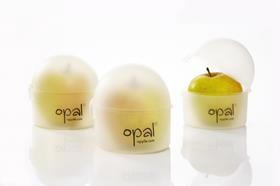
The revitalisation of the yellow apple category is set to gather speed in 2016 as the Opal Partnership Programme continues to extend its global reach. The combined effect of new grower members and more mature – and therefore productive – orchards adds up to a considerable rise in projected volumes over the coming year and fruit.select, the German company that owns the brand’s trademark, will redouble its efforts to position the brand at the premium end of the market.
“2015 was an important year for us,” managing director Michael Weber tells Eurofruit. “We gained two new partners from Spain (Nufri and Orchard Fruit), while the crop in the UK, France, Germany, Austria and the Czech Republic matched our expectations, especially on flavour and eating quality.”
European production currently stands at almost 3,000 tonnes. However, as the majority of these plantings are less than three years old, fruit quality has to be carefully monitored as the fruit is more exposed to the elements. However, once trees have had time to establish their canopy structure, fruit quality will become more regular and skin finish cleaner.
Weber now has his sights firmly set on Italy, where the first commercial pilot orchards in Piemont and trial orchards in Trentino and Val Venosta are showing very promising results.
“These growing areas, located at an altitude of 400-800m, are perfect, and due to their relatively dry climate, fungicide treatments could be cut by 50 per cent or more,” Weber explains.
Production in the Southern Hemisphere is also set to rise as commercial orchards belonging to partners Dutoit in South Africa and Mr Apple in New Zealand become more mature. The group is working to attract new growers and marketing companies in Chile, South Africa and New Zealand.
The goal now is to position Opal as a premium brand – something that Weber acknowledges will take time to achieve and require a step-by-step approach. The initial focus will continue to be on the UK where the Opal brand is marketed by Univeg UK, (now in its fourth season) and in Germany/Austria where SanLucar is in its second marketing season.
“Both markets are very important in order to help us work out how to position the brand correctly,” Weber says. “Until recently, consumers have paid little attention to a high quality yellow apple but consumers are now starting to appreciate the unique flavour and texture of our apples.”



